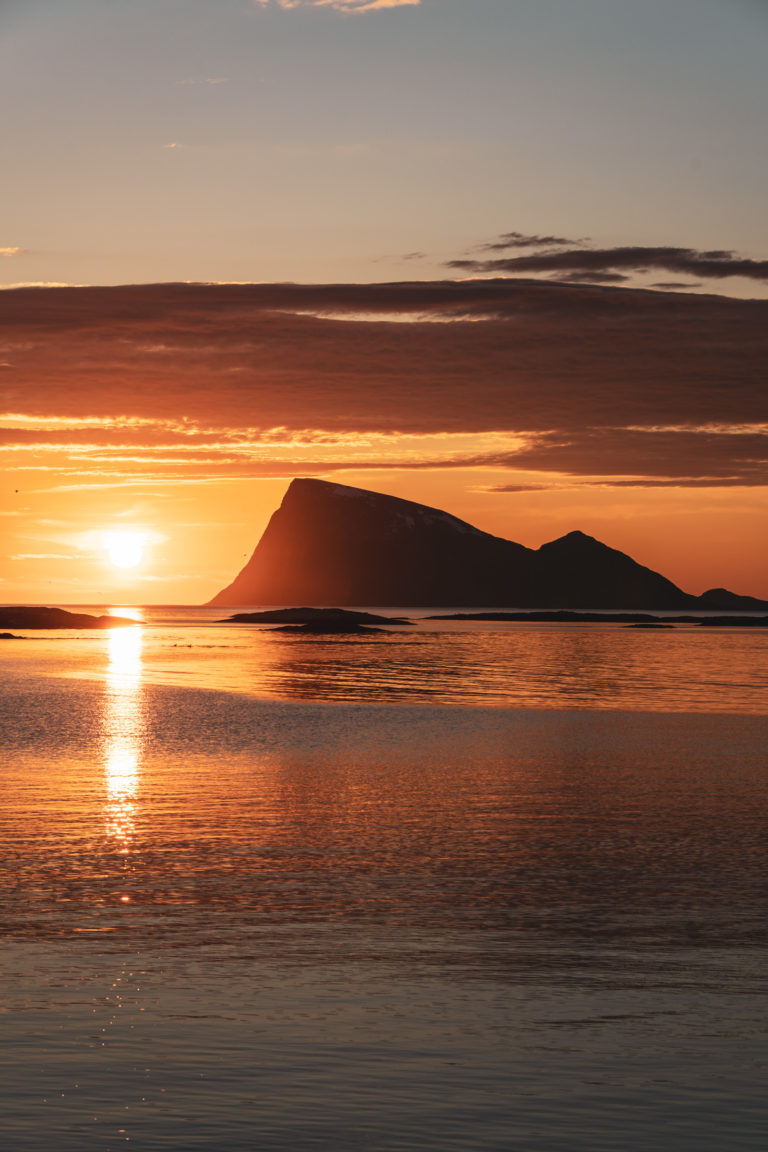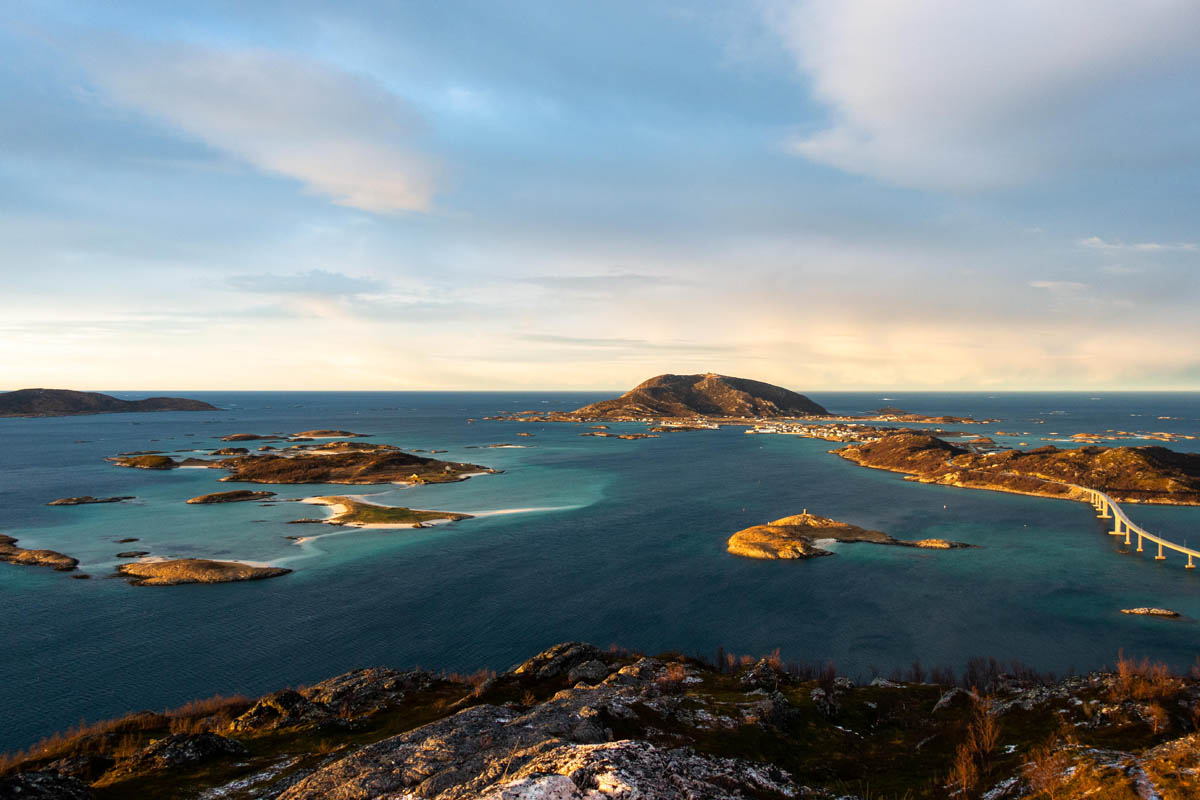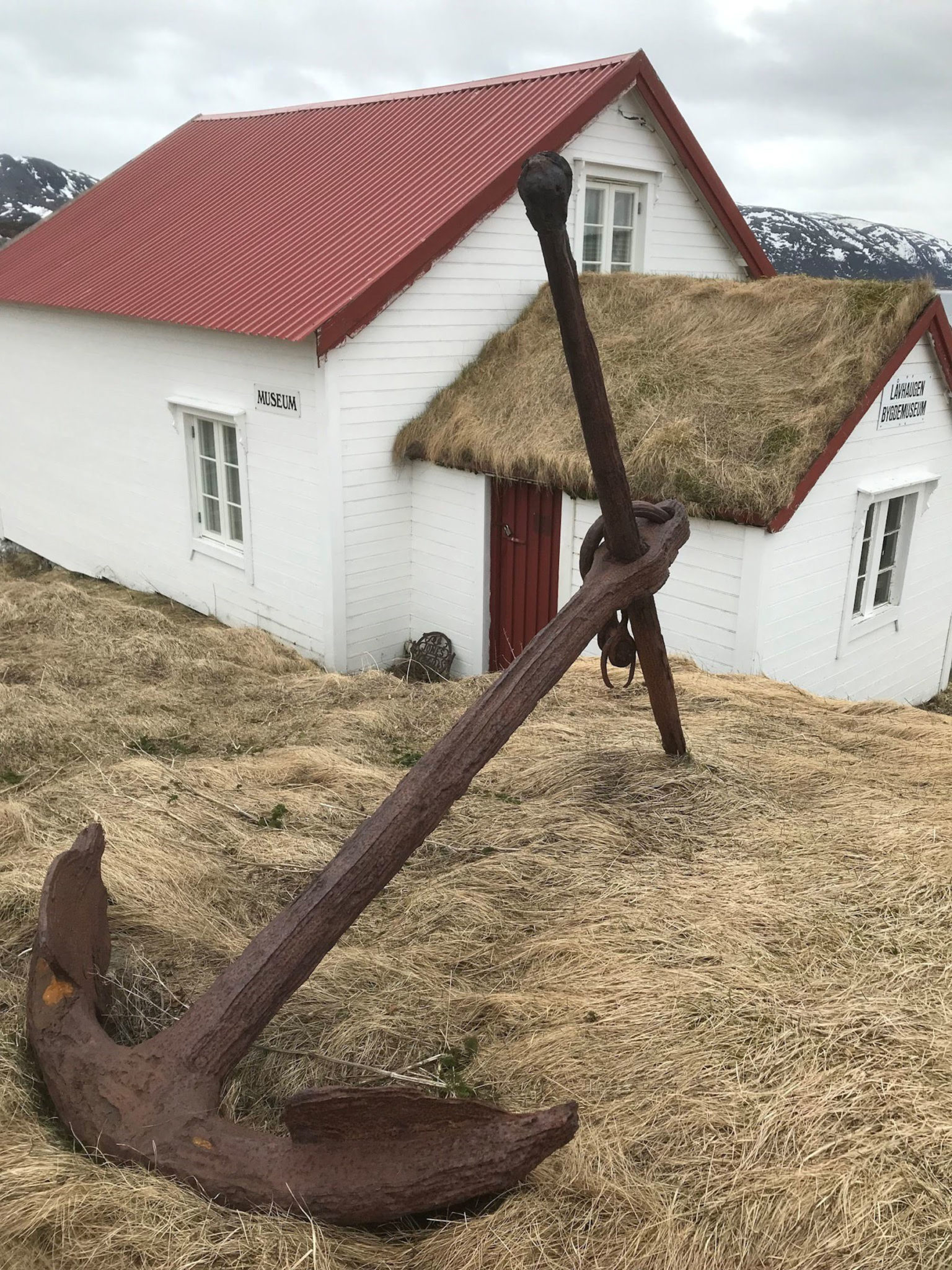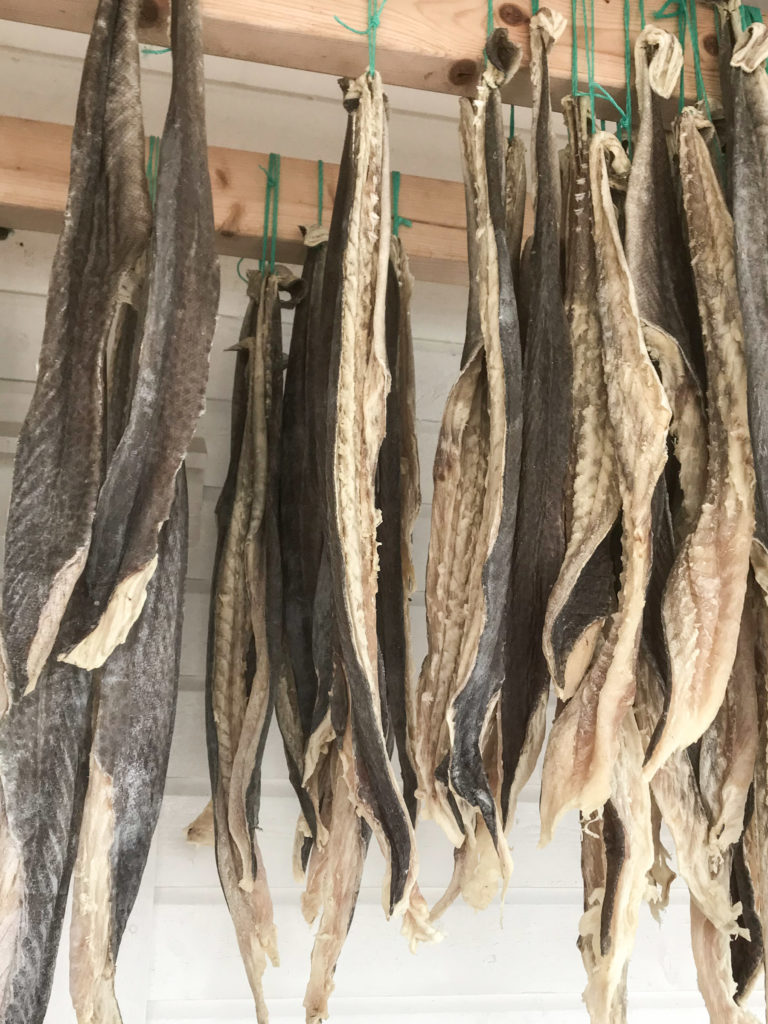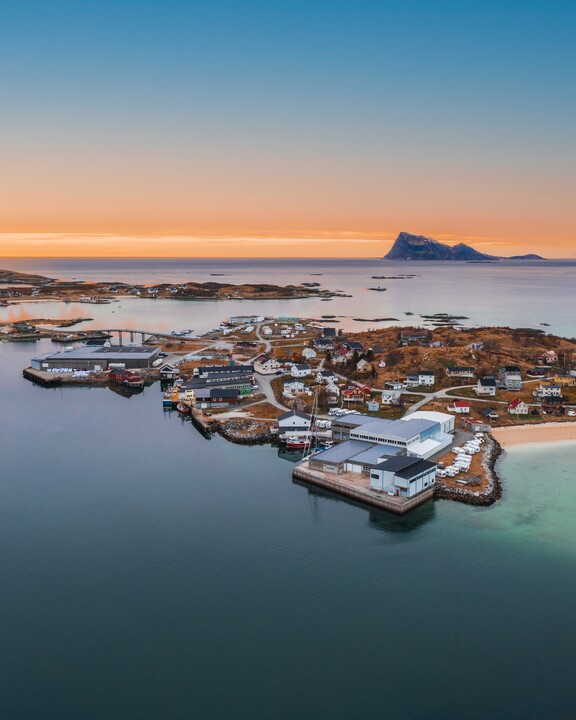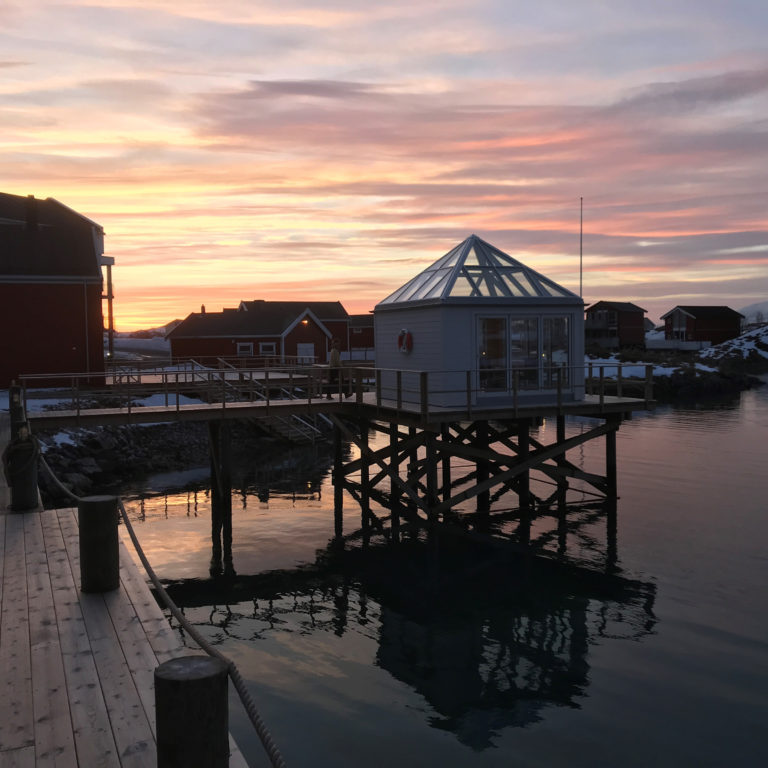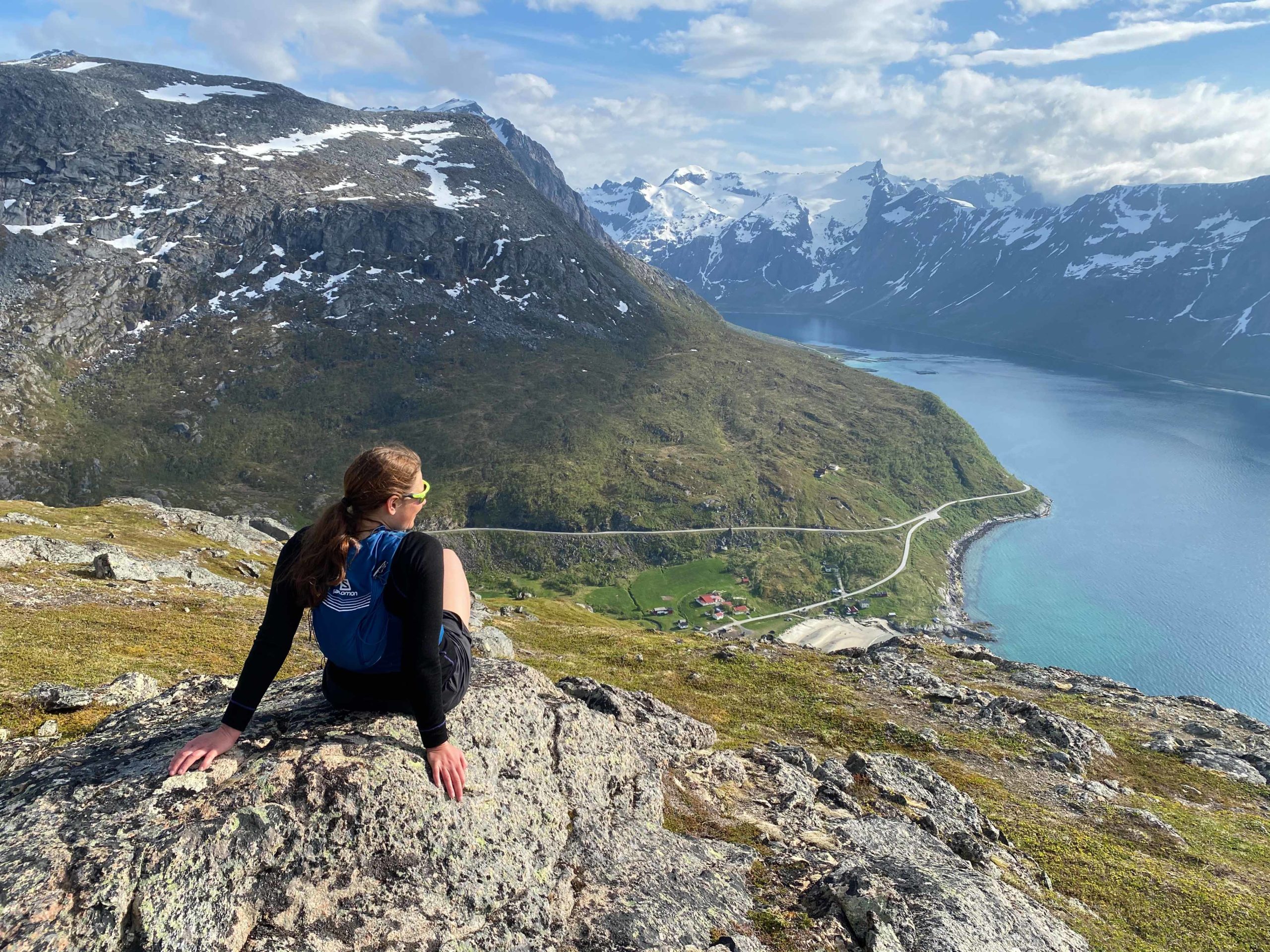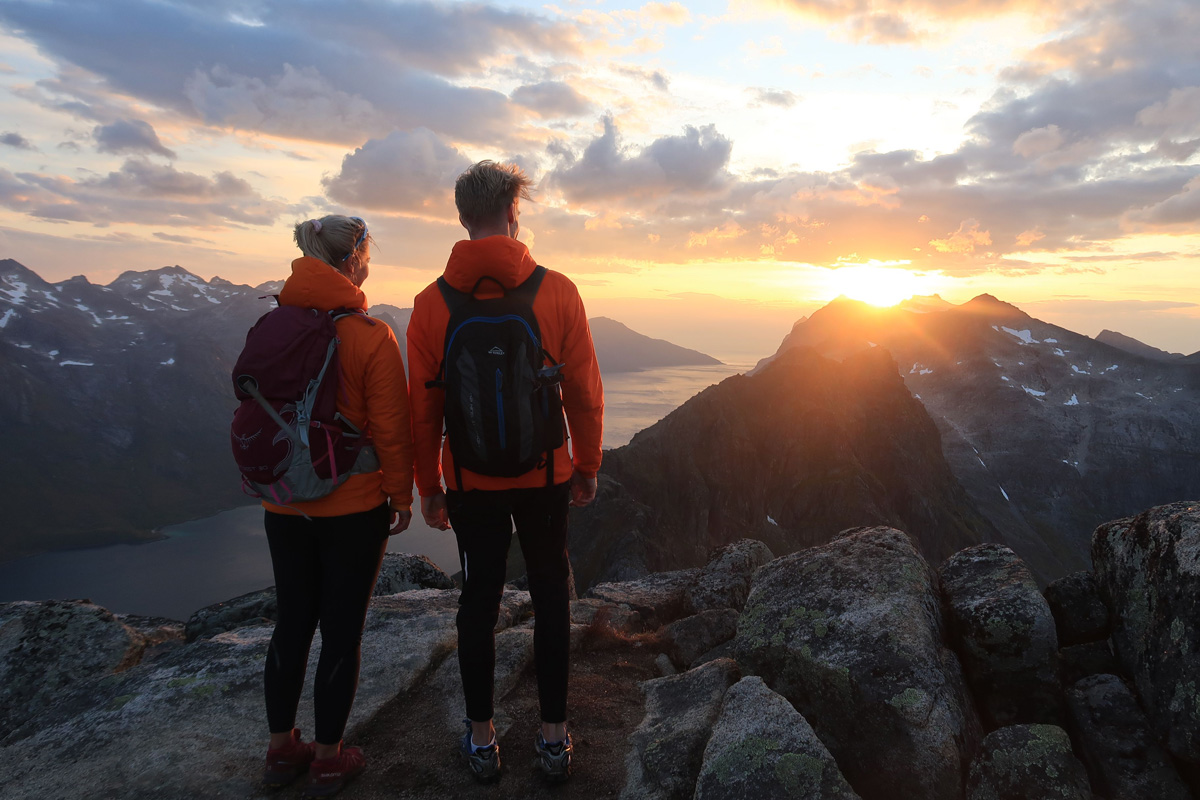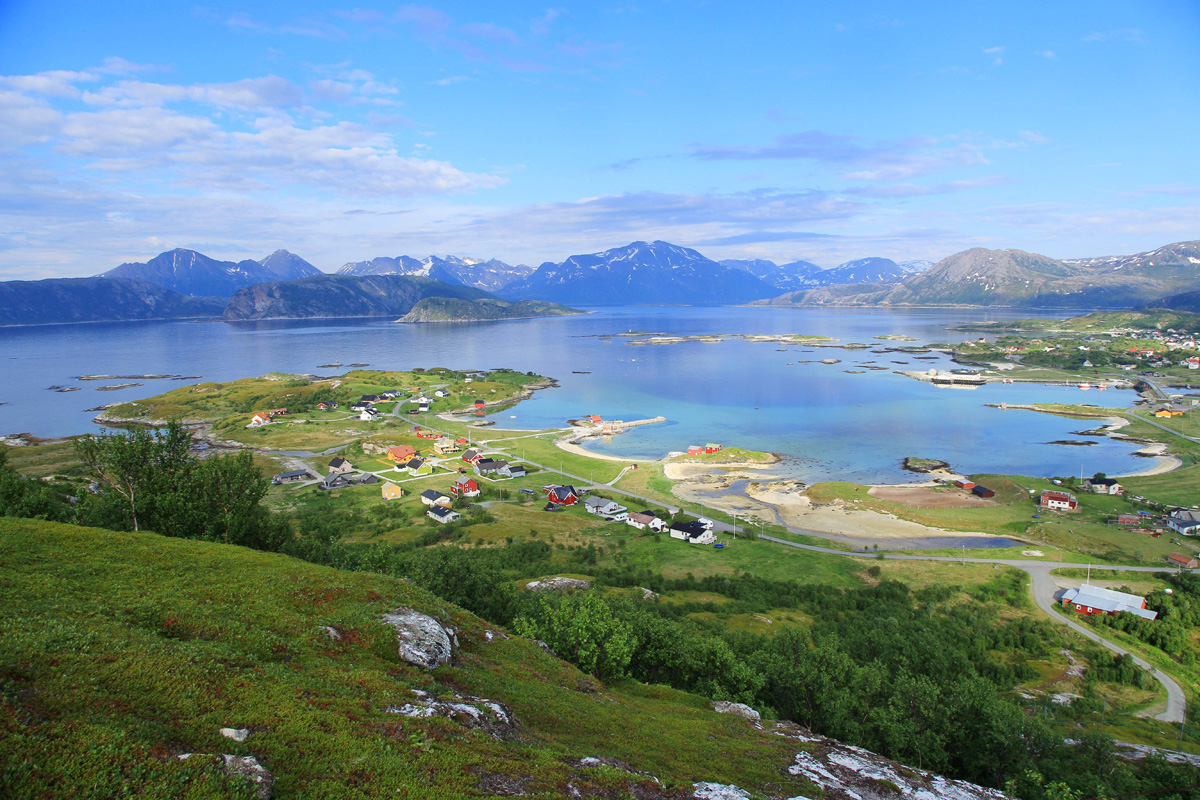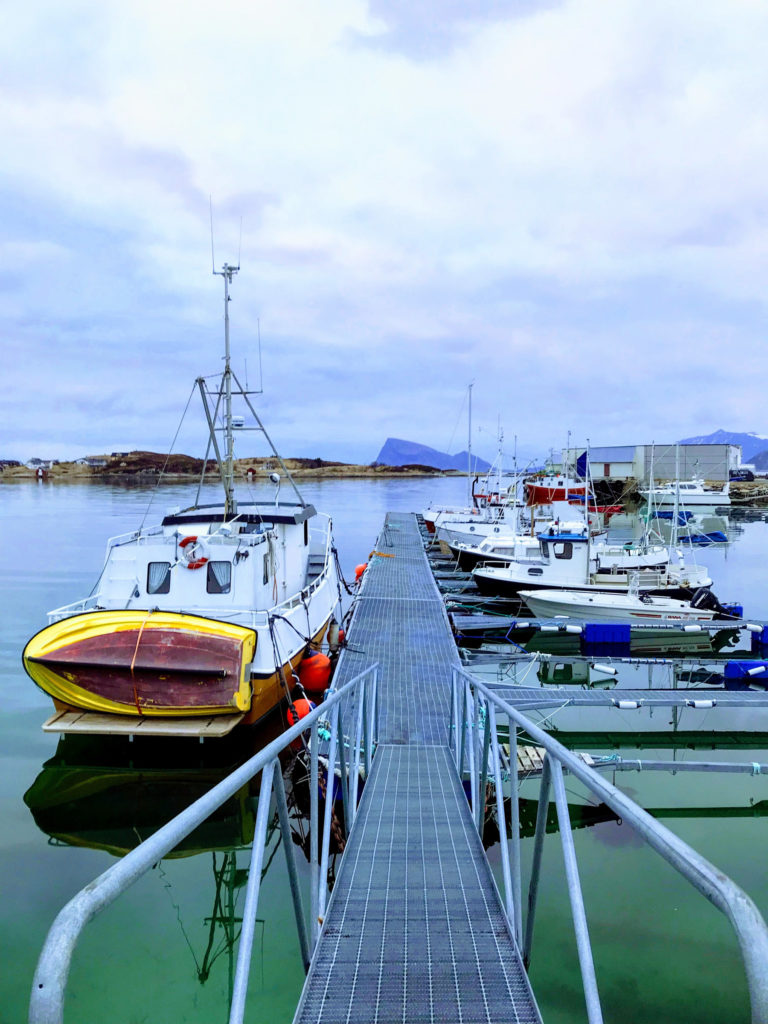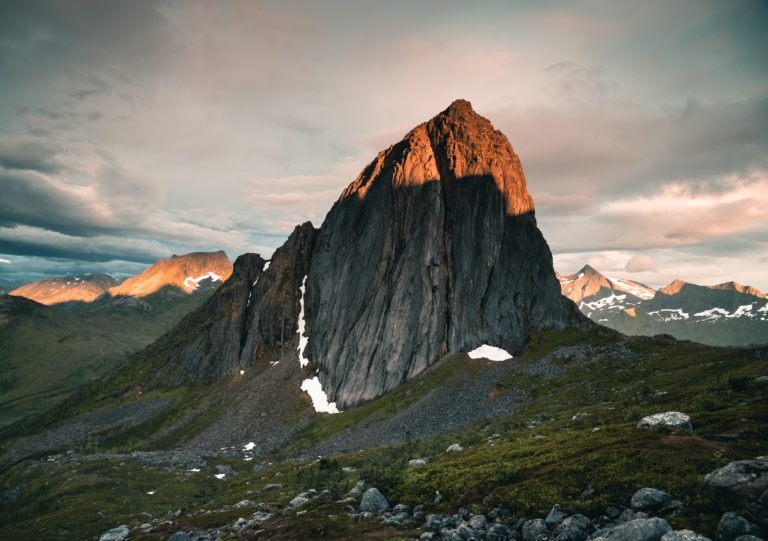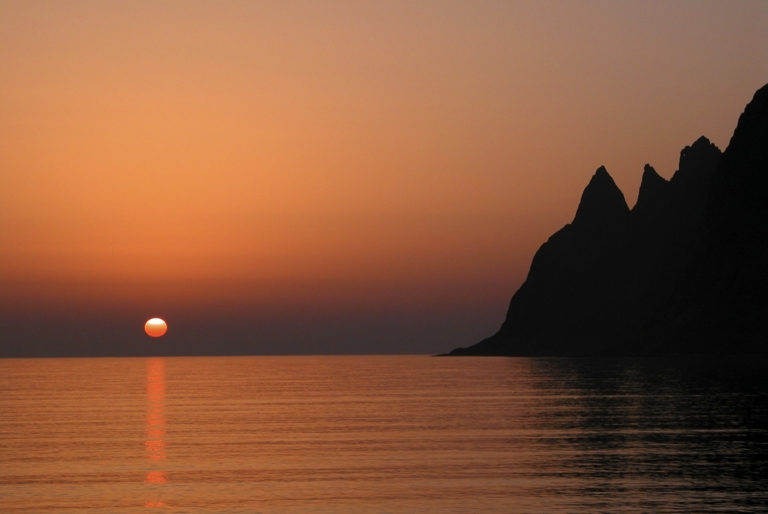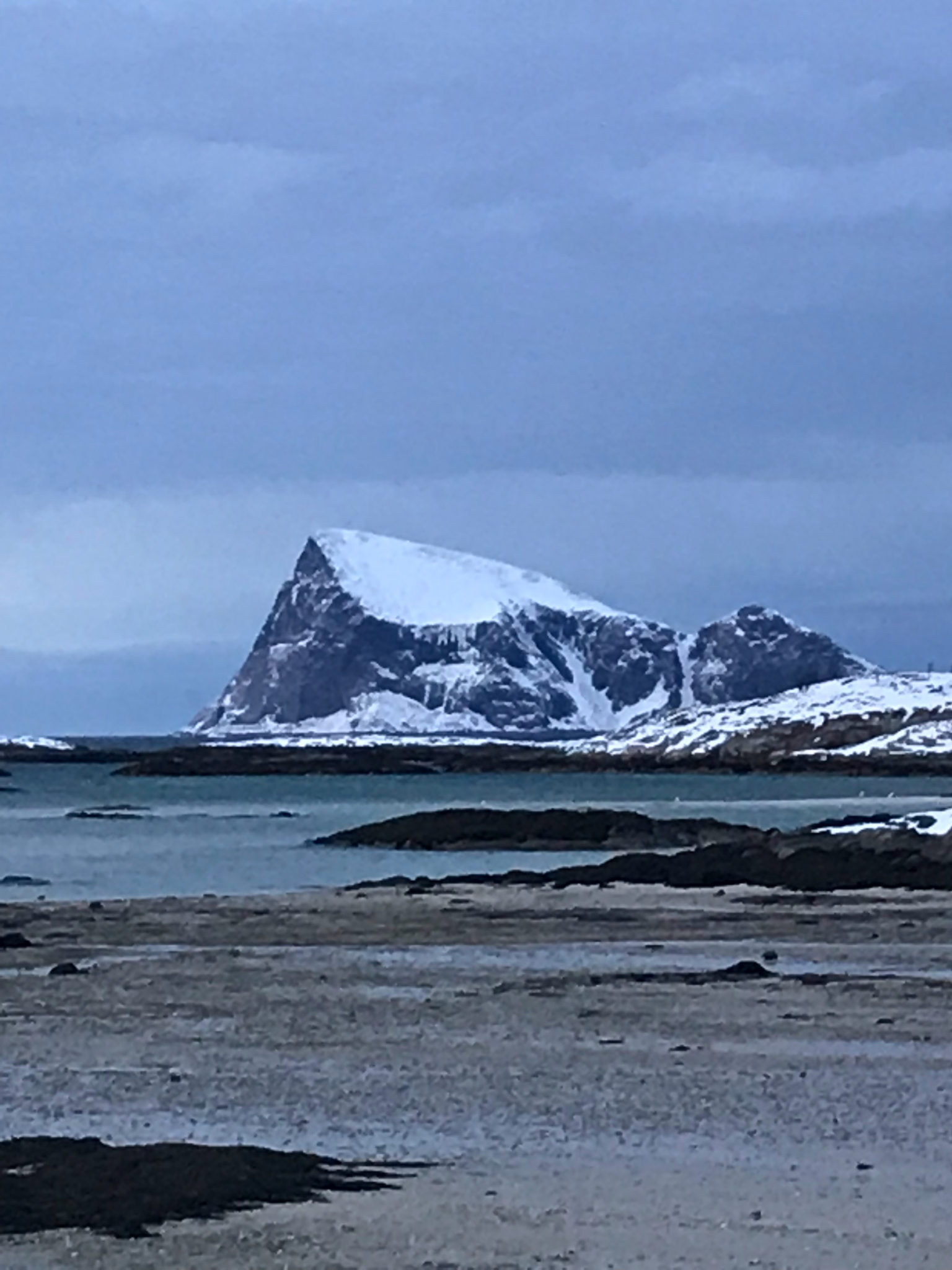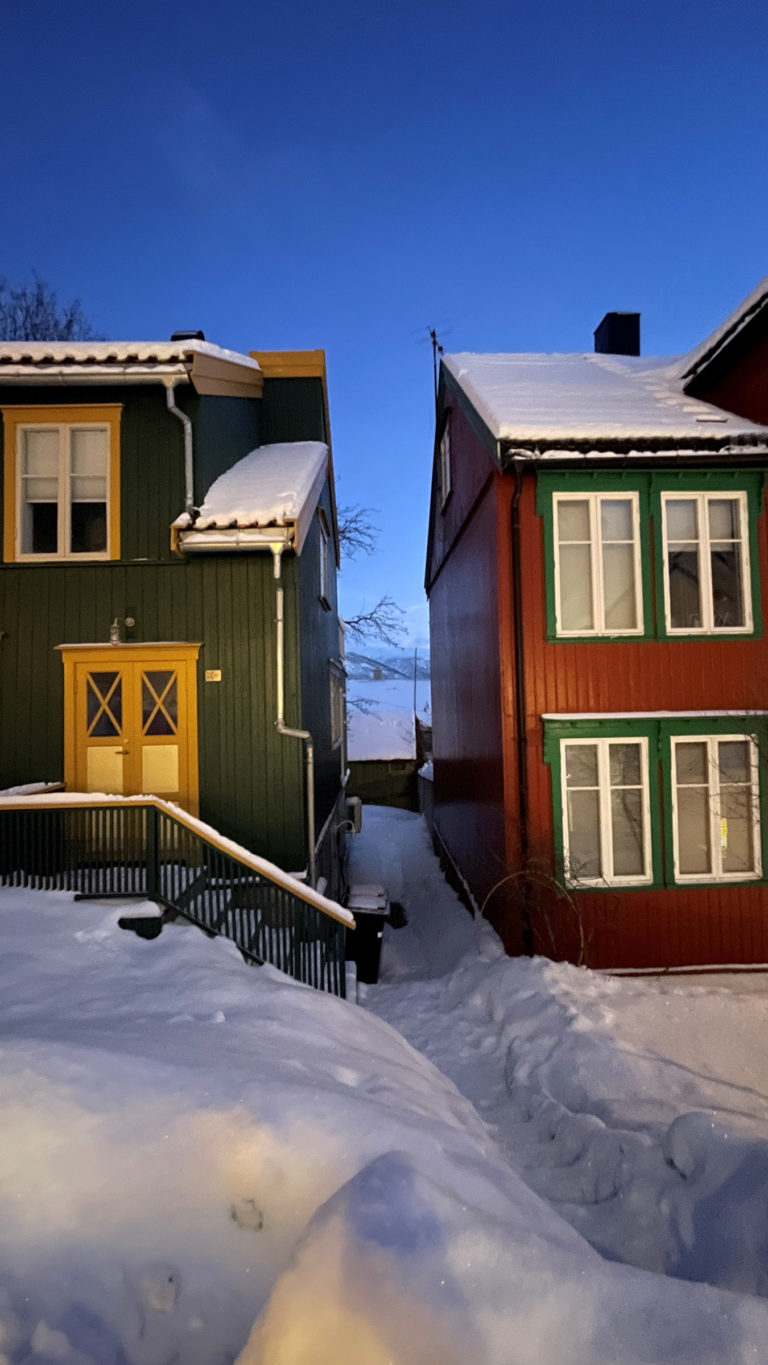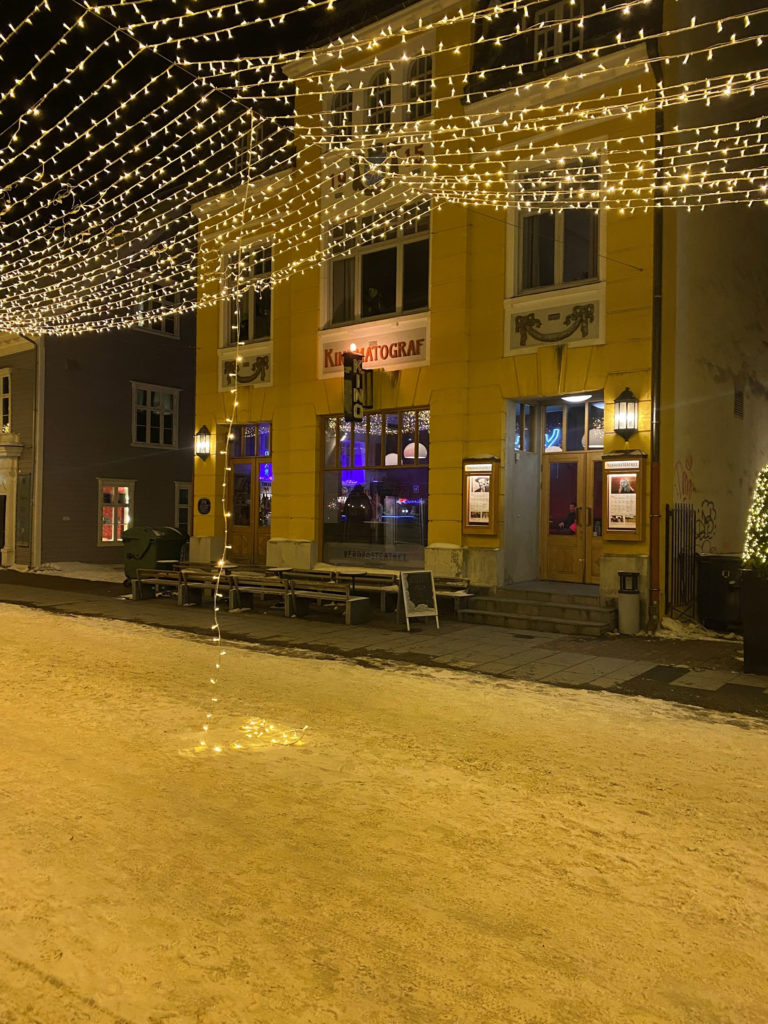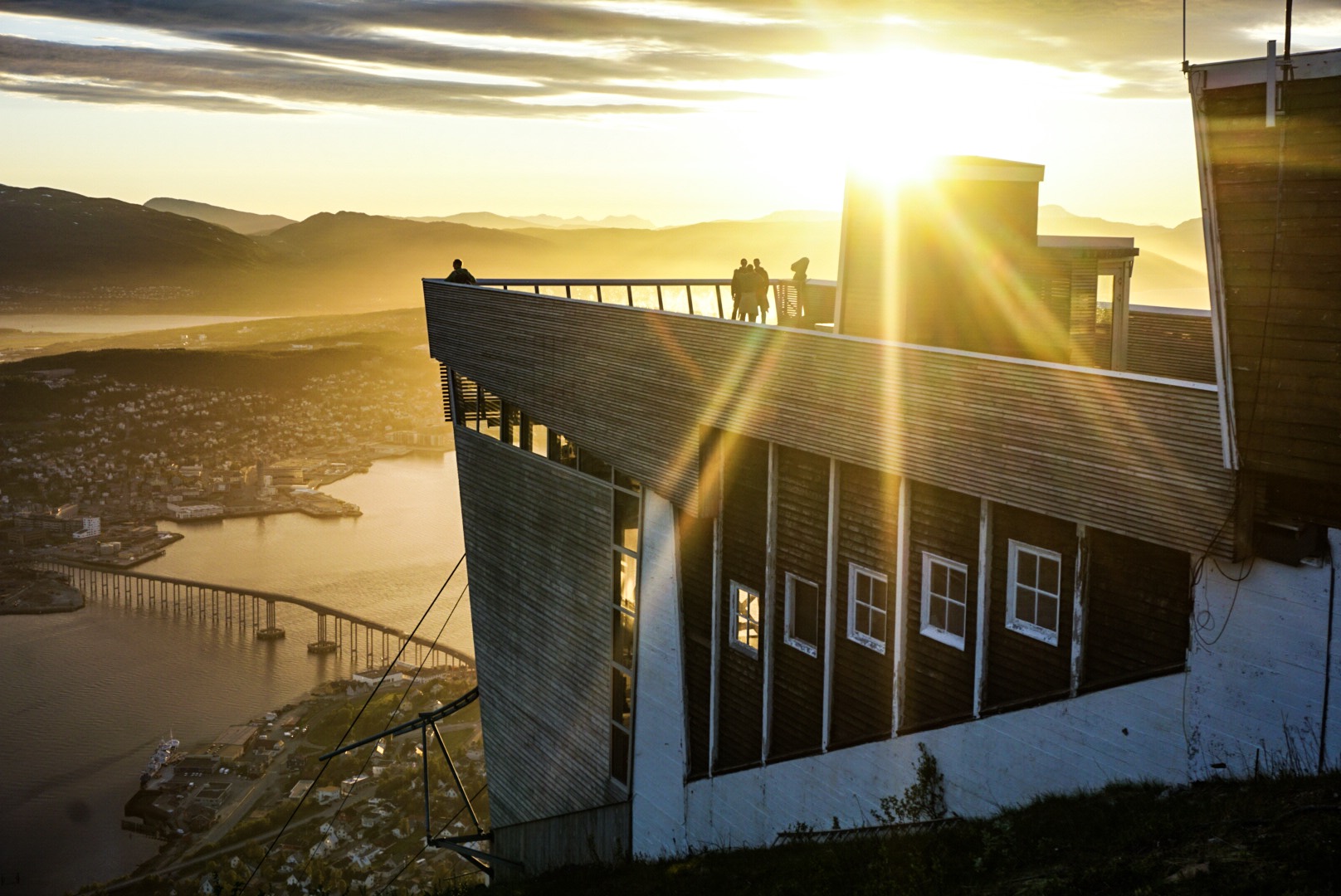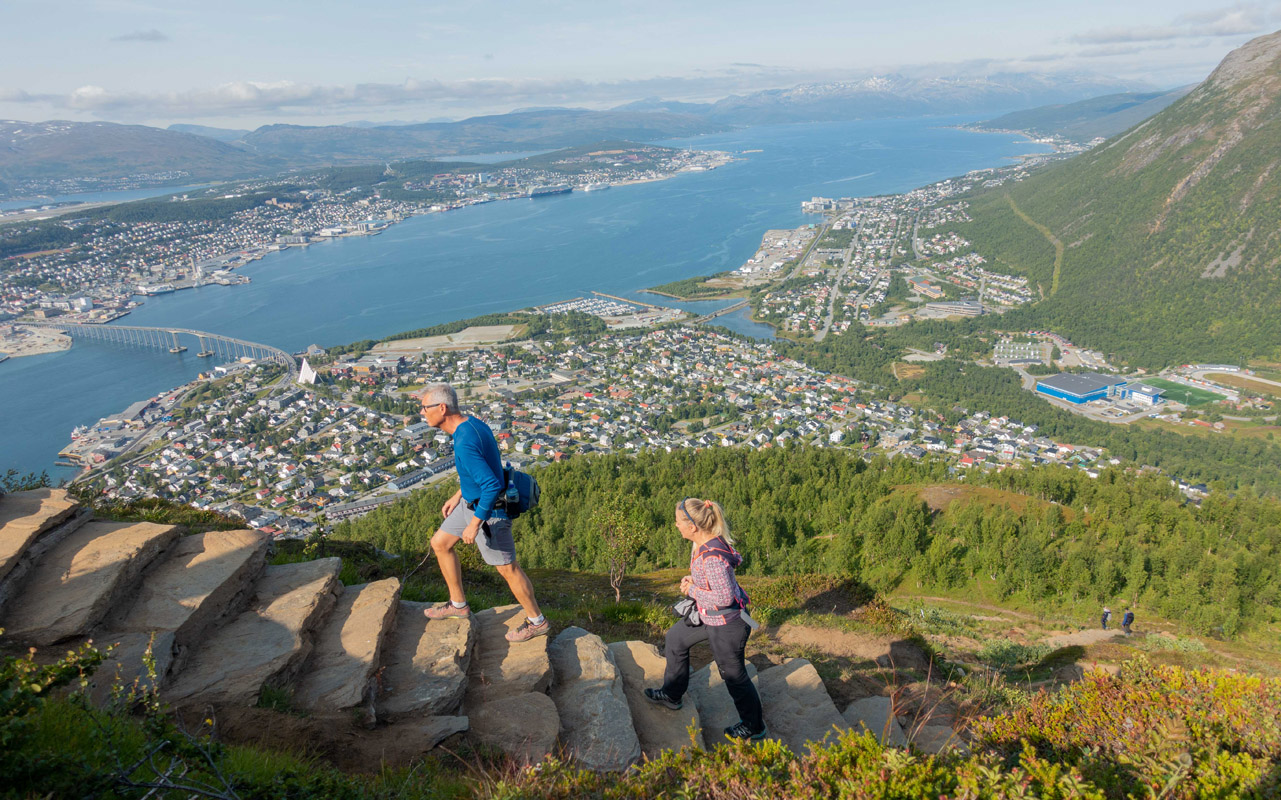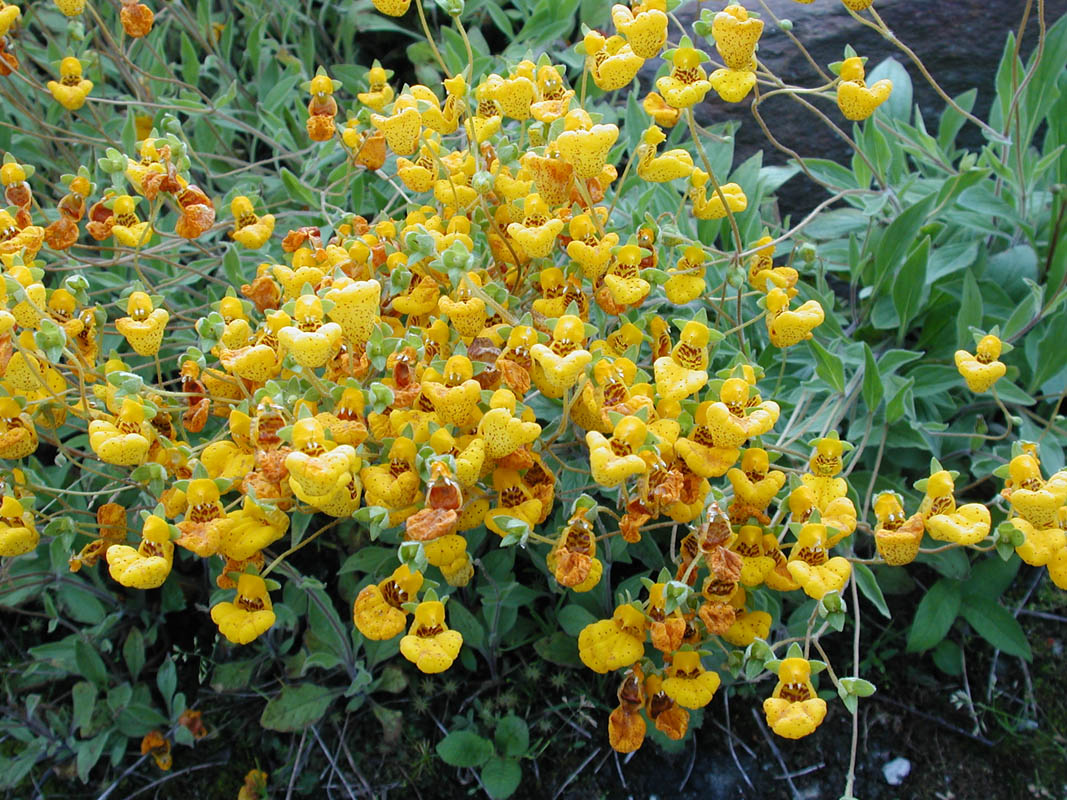With its 300 inhabitants, Sommarøy is one of the busiest fishing villages in the county of Troms. The main produce here is herring, which is processed and packed in a state of the art processing plant where it is frozen for global export. This fishing community is thus an important contributor to the national economy, and the export value per capita is substantial.
A new fishing village
A more evocative name than Sommarøy is hard to imagine. The name goes back to the time when most people lived on the neighbouring Hillesøya Island; they used the land on Sommarøy to graze their cows in summer.
Sommarøy began to develop around the turn of the last century, in tandem with the motorisation of the fishing fleet. Previously, when rowing and sailing were the norm, it was common to live as far out on the coast as possible. However, with the arrival of the motorboat and larger vessels, the need for a proper harbour grew.
The view is omnipresent
The views from Sommarøy Island are impressive to say the least. To the north you can see all the small islands of the Tromsø County. Håja is the highest of these islands and rises 486 meters straight out of the water. It has the same shape as the Arctic Cathedral in Tromsø. Coincidence? The jury is still out on that one!
To the south, you can see the all the way to the Kjølva headland, past the steep shoreline of Senja. Facing inland and towards the east is the view of the mountains of Kvaløya, whilst Atlantic itself lies to the west. If you manage to be here at midnight in the height of summer, the midnight sun shines on the horizon that lies due west of Håja Island.
White beaches line the island
The beaches are of Riviera standard, and there are many warm and shallow coves on Sommarøy. The water temperature can’t exactly be called inviting, but during some summers, a dip can be just the ticket. However, it is much more common to take long, pleasant walks along the beach, picking up shells and just taking in the scenery.
Practical about Sommarøy
Sommarøy is a small island about one hour southwest of Tromsø – and this is where you find most of the people and activity in the village. Quite a few houses are also found on the neighbouring island of Hillesøy, connected with a low bridge. Altogether, some 300 people live here. This ensemble is connected to the much bigger island of Kvaløya by the Sommarøy bridge. This again means you can reach Tromsø and the Tromsø airport with no ferries involved.
The most direct drive is on the national road 862 from Tromsø’s airport (ten minutes from the city centre of Tromsø) through Eidkjosen and Sjøtun. The old road, on county roads 858/7764 through Eidkjosen, Larseng, Straumsbukta and Buvika, is longer and narrower. However, on a day trip, you can make a loop and see more.
There is a bus in the morning from Sommarøy, taking you to Tromsø. Then you can return to Sommarøy in the afternoon. This is convenient if you’re staying over at the hotel, but unsuitable for daytrips. Public buses are informed about on Svipper (scroll to 420 for a pdf). In Summer, the private company Arctic Route operates a bus service all the way down to Lofoten, stopping at Sommarøy.
There is a ferry from nearby Brensholmen to Botnhamn (click the Botnhamn-Brensholmen link for updated routed) on the northern tip of Senja, with a few departures a day all year round. If you have your own car, you then come directly to the Norwegian Scenic Route, and can continue to Gryllefjord for an onward ferry to Andenes. Or you can choose to explore the less-visited areas south and east on Senja Island.
You can indeed. Sommarøy Arctic Hotel is of the comfortable kind.
Depending on the time of the year, there are many things to do for groups and individual guests.
The best place for updated information on accommodation, activities, sights, eating and anything else of importance to visitors will always be Visit Tromsø – the local tourist information / visitors’ centre.
Go for a walk around the village
A walk through the centre of the village is a must. The sights may not impress by age or size – it’s the meaning they hold for the people here that matters. Small roads wind between houses from the fifties onward, often painted in vivid colours. Walk slowly, nod a “hey” when you meet someone and don’t step into anyone’s garden. Occasionally, one has access to a nice stretch of beach.
Central in the village is the Royal Park- Kongeparken – a little green space with a stone in the centre. The stone has the signatures of king Harald and Queen Sonja, and commemorates their visit in the summer of 1992.
Kaillkråa is a meeting point for the men
The nearby shop is of course the place where everybody meets. Next to the entrance, one finds the Kaillkråa – the men’s corner – where the men are parked while their wives go shopping. A time-consuming wait, the men have their own cups with their names on.
The Baptist church and the handicraft store are stops on the way
The Baptist church is a small chapel with a round profile, overlooking the road. Baptists were active in Sommarøy from the 1870ies, and in 1892 the congregation was officially founded. The chapel dates from 1981, and is often open to visitors.
The shop of the local handicraft association -Hillesøy Husflidslag – is just below. They sell whatever people make in their homes – and thick, proper socks and mittens are useful for anyone north of the tropics in winter. The opening hours may seem erratic, but on Saturdays, and on nice days in summer, they’re often open.
Låvhaugen bygdemuseum is a typical fisherman’s home
A house from the first years of Sommarøy as an important fishing village is the little house on Låvhaugen – a grassy hump in the landscape. It dates from around 1890, and is very modest in size. A whole extended family lived here and they even hired out the back room. It is all well-kept, albeit a little more orderly than it would have been back in the day. The opening hours vary, but ask in the local shop if someone can open for you.
Easy hikes lead to great views
The hill of Hillesøytoppen – 214 metres high – is not difficult to master. The top can be reached on several paths, and the views are to die for. You get a much better impression of the myriads of islets, skerries, rocks and green-tinged sandbanks extending north from Sommarøy, as well as towards the horizon in the west.
The hill of Ørnfløya is on the big Kvaløya island across the bridge. A mere 154 metres in height, it has a great view towards the elegant curve of the Sommarøy bridge, as well as fantastic views over the skerries and sandbanks south of Sommarøy towards Senja. Of course, you also see Håja and the islands in the north.
Both hikes are great for the midnight sun in summer. Whether or not you should go up there in winter, depends a lot on the conditions. If there is solid powder snow cover, you should be fine. If, however, there is a lot of ice, it’s better to skip it. Unless you have heavy duty crampons.
Kayaking, skiing and boat trips add to the experience
In and around Sommarøy, there are also organised activities. You can also get out at sea. Good kayak guides can take you out to the maze of tiny islands all year – sunkissed midnight sun tours in summer and rougher rides in winter.
In the sunny late Winter, the nearby peaks offer fantastic ski freeriding. Fishing trips are of course great fun out here on the Atlantic. In Spring and Summer, one can go out by boat to the island of Hekkingen to see white tailed eagles or to the striking island of Håja, to climb its 486 metre summit. In Winter, snow shoeing and dog sledding are also on offer.
To Tussøy Island
Tussøy, the island due north of Sommarøy, is serviced by a boat a couple of times per day. Tourists are welcome to use this service, which takes a good hour there and back. It is possible to go ashore in the morning and to be fetched in the afternoon. Proper clothing is essential. Being an island with only five inhabitants, it has no services, so you will be out in the bracing open-air for many hours.
Thread carefully in a close-knit village
Sommarøy is used to visitors. Demanding and loud-mouthed city slickers from Tromsø come every weekend. However, with the increase of international tourism, the amount of people coming can be a lot to handle for a small community. Make sure you don’t step into people’s gardens – even if they usually have no fences. Also avoid taking photographs of children – these days people everywhere get more wary of that. Also try not to be noisy, especially late in the evening when people are trying to sleep.
Make sure you bring everything with you when you leave the beach. If you have coffee at the local café Havfrua, that is actually a contribution in itself.
Lamentably, there are no public toilets in the village. Havfrua kro – the local café – and the hotel have facilities for their guests, but they cannot accommodate for others. The solution is simple – have a coffee and a break at one of the two.

